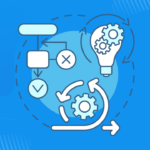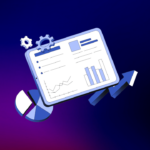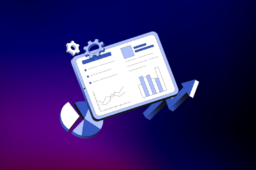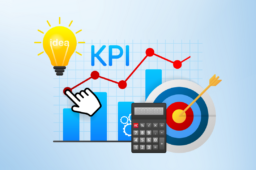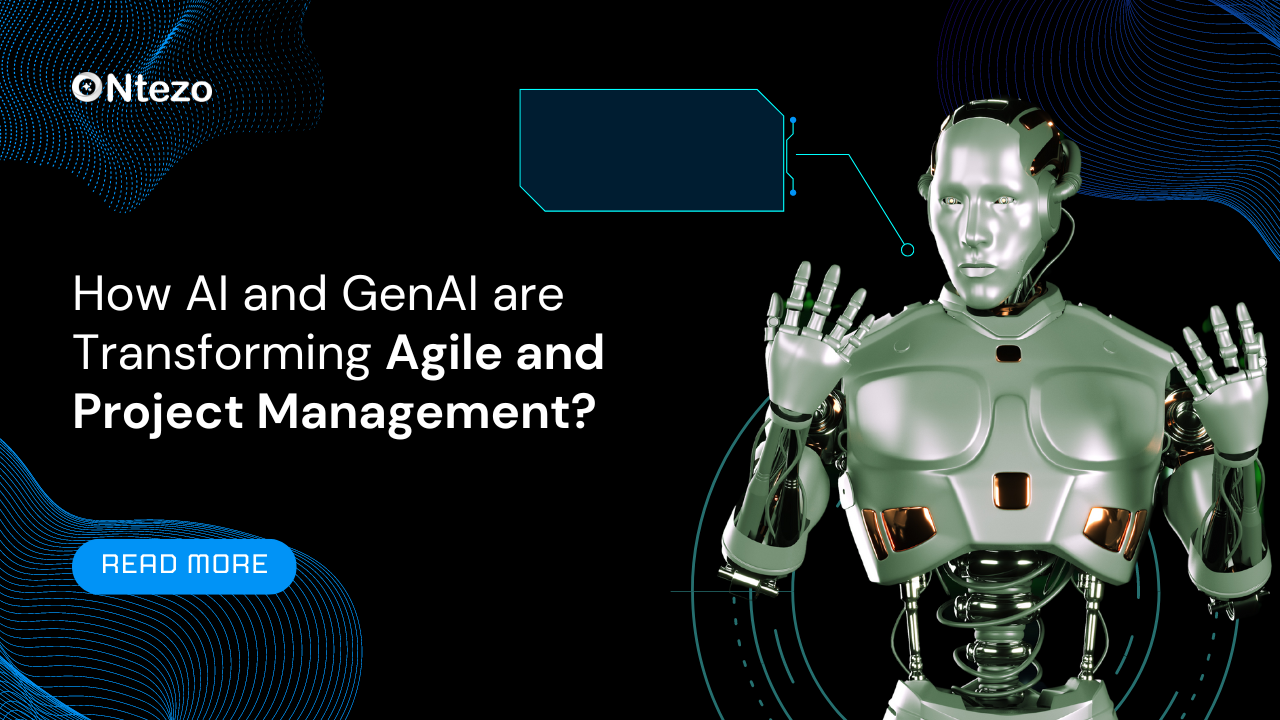
How AI and GenAI Are Transforming Agile and Project Management?
- August 21, 2024
- by
- tehreem
Traditional project management approaches often struggle to keep pace with the demands of fast-paced, ever-evolving industries. Agile methodologies have attempted to address these challenges, but even Agile teams face hurdles like resource allocation, sprint planning, and real-time decision-making. The manual processes and human-driven decisions in project management can lead to inefficiencies, errors, and missed deadlines.
Imagine the frustration of missing project deadlines due to unforeseen challenges, struggling with task prioritization, or dealing with team burnout because of poor resource management. These issues not only impact project outcomes but also hinder team morale and productivity.
Enter AI and GenAI – the transformative forces reshaping Agile and project management. By leveraging the power of artificial intelligence and generative AI models, project managers can streamline processes, optimize resource allocation, and enhance decision-making, leading to more efficient and successful project outcomes.
AI and GenAI: Transforming Agile Methodologies
AI and GenAI are revolutionizing Agile methodologies by automating processes and providing predictive analytics that aid in better decision-making. Traditional Agile methods rely heavily on human judgment, which, while valuable, can be prone to errors and biases. AI-driven tools mitigate these risks by offering data-backed insights that improve task prioritization and sprint planning.
For instance, AI can automate the task management process, freeing up valuable time for Agile teams to focus on more strategic initiatives. AI-powered tools like Trello and Asana now offer features that automatically prioritize tasks based on project goals, deadlines, and team capacity. This automation not only streamlines workflows but also ensures that critical tasks are completed on time.
According to a report by McKinsey, companies that have adopted AI-driven project management tools have seen a 15% increase in project success rates and a 30% reduction in project completion times
AI-Powered Project Management Tools
The integration of AI-powered tools in project management has brought a new level of efficiency and accuracy to the table. Tools like Monday.com, Jira, and Microsoft Project now incorporate AI and GenAI features that help project managers make more informed decisions. These tools can analyze historical data to predict potential roadblocks and suggest solutions, making them invaluable assets for Agile teams.
Generative AI models, or GenAI, take this a step further by enhancing traditional project management software. GenAI can generate scenarios, project timelines, and even draft project reports based on the data fed into it. This capability allows project managers to visualize different project outcomes and choose the most effective path forward.
A survey by PwC found that 54% of project managers believe that AI-powered tools have improved their project forecasting accuracy by at least 20% .
Resource Allocation with AI and GenAI
Resource allocation is a critical component of project management, and AI has made significant strides in optimizing this process. AI-driven tools can analyze a team’s workload, availability, and skillsets to assign tasks more efficiently. This ensures that resources are used effectively, reducing the likelihood of burnout and improving overall project efficiency.
For example, AI can forecast resource needs based on previous project data, helping Agile teams prepare for potential challenges. AI-powered tools can also suggest reallocation of resources if certain tasks are taking longer than expected, ensuring that project timelines are adhered to.
A tech company that implemented AI-driven resource management saw a 25% improvement in project delivery times and a 35% reduction in resource-related issues .
Decision Making in Agile Projects with AI and GenAI
Decision-making in Agile projects often needs to be fast-paced and accurate. AI’s ability to process large amounts of data in real-time makes it an indispensable tool for project managers. AI algorithms can identify patterns and trends that may not be immediately apparent to humans, allowing for more informed decisions.
In Agile environments, where teams must adapt to changes quickly, AI’s predictive analytics capabilities are particularly valuable. AI can forecast potential risks and suggest mitigation strategies, enabling teams to make proactive decisions rather than reactive ones.
According to Gartner, AI-driven decision-making tools have reduced project risks by 40% in companies that have adopted them .
The Future of AI in Agile Project Management
As AI and GenAI technologies continue to evolve, their impact on Agile project management will only grow. Future trends indicate a deeper integration of AI in every aspect of project management, from planning to execution to reporting. AI will continue to automate routine tasks, allowing project managers to focus on strategic decision-making.
Moreover, the development of more sophisticated GenAI models will enable even greater personalization and adaptability in project management tools. These models will be able to simulate entire project lifecycles, providing project managers with a comprehensive view of potential outcomes before the project even begins.
A report by Accenture predicts that by 2025, AI and GenAI will be integrated into 80% of project management tools, revolutionizing the way projects are managed globally .
Challenges and Ethical Cons
Despite the numerous benefits, the integration of AI and GenAI into project management is not without challenges. One major concern is the potential for AI to replace human roles in decision-making, leading to job displacement. Additionally, there are ethical considerations around the use of AI in making decisions that could have significant impacts on individuals and teams.
It’s crucial to strike a balance between leveraging AI for efficiency and maintaining human oversight to ensure ethical and fair decision-making. Agile teams must be trained to work alongside AI, understanding its capabilities and limitations.
A study by MIT found that 78% of project managers believe that while AI will enhance their roles, it will not replace the need for human decision-making.
How to Integrate AI and GenAI into Workflow?
Integrating AI and GenAI into your Agile workflow requires careful planning and a strategic approach. Start by identifying areas where AI can add the most value, such as resource allocation, task management, or decision-making. Implement AI tools gradually, allowing your team to adapt to the new technology.
Training is essential. Ensure that your team understands how to use AI tools effectively and is comfortable with the changes. Encourage a culture of continuous learning, as AI technologies are constantly evolving.
What are the benefits of using AI in Agile?
AI streamlines processes, enhances decision-making, and optimizes resource allocation, leading to more efficient project management.
How can AI improve project timelines?
AI’s predictive analytics can forecast potential delays and suggest ways to mitigate them, helping to keep projects on track.
What are the challenges of integrating AI into Agile teams?
Challenges include resistance to change, the need for training, and ethical considerations in AI decision-making.
Can AI replace human roles in Agile project management?
While AI can enhance many aspects of project management, it is unlikely to replace the need for human judgment and decision-making.
Embracing AI for a Future-Ready Agile Workflow
AI and GenAI are not just buzzwords—they are transformative tools that are reshaping Agile and project management. By embracing these technologies, project managers can enhance efficiency, improve decision-making, and drive successful project outcomes. As AI continues to evolve, those who adopt it proactively will be better positioned for future success in the dynamic world of project management.

